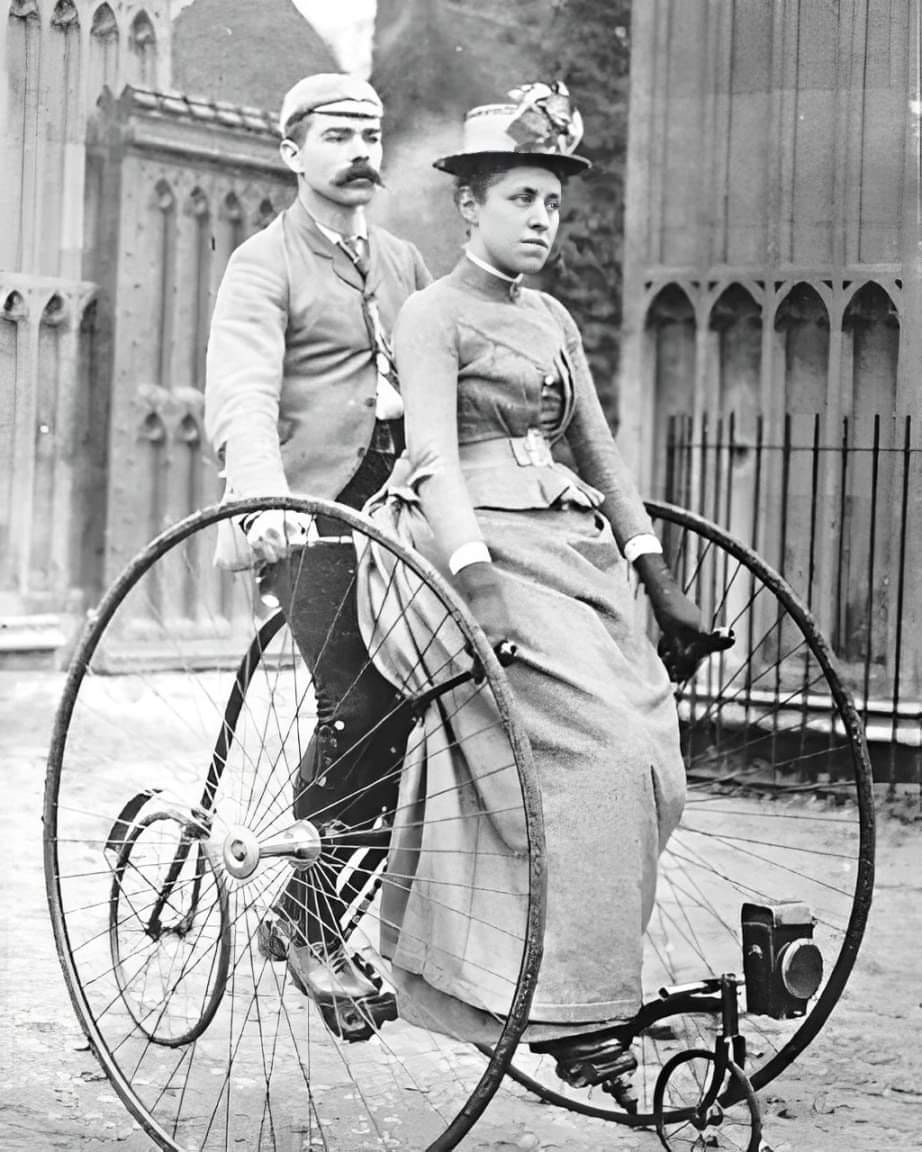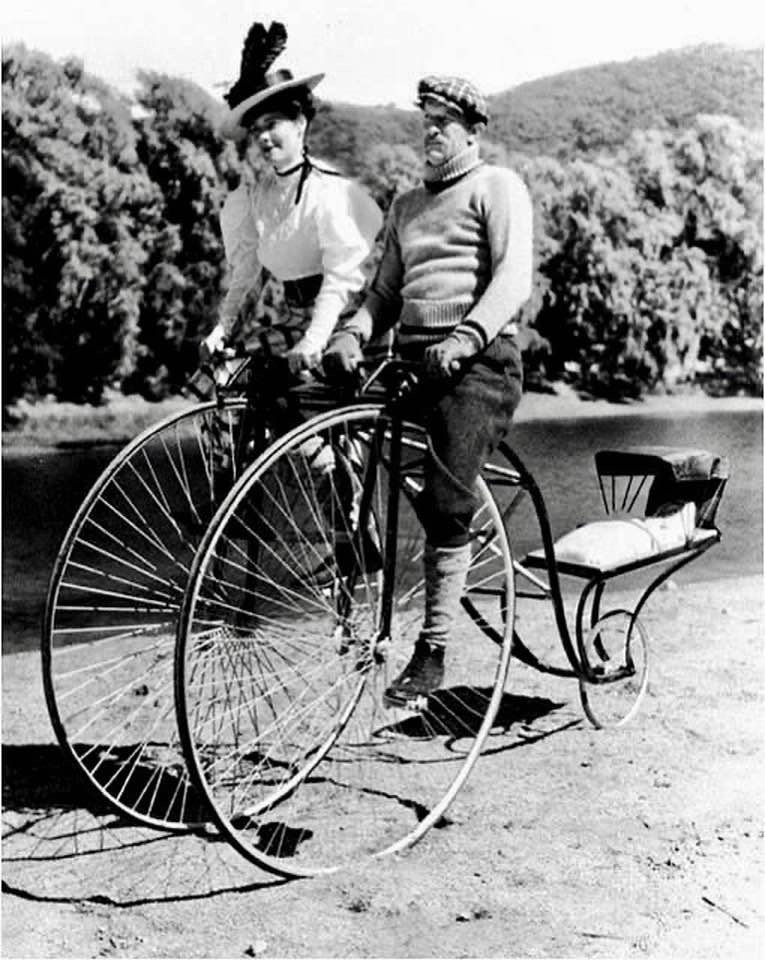
This stern Victorian couple seems to be pedaling a tandem tricycle toward a wary future. The photograph, likely taken around 1885, shows a gentleman with an immaculate mustache and a sporting cap, convinced he is taming modernity; she, upright and elegant, grips the handlebar with the dignity the occasion demands. These machines, forerunners of the modern bicycle, came to symbolize in industrial Britain not only technical progress but also the nascent freedom of women.
Here we see a Victorian couple upon a tandem bicycle. These nineteenth‑century contraptions were designed for two or more riders. Both were expected to pedal in unison, though the one seated at the front—promptly styled the “captain”—was entrusted not only with steering the machine but also with directing household finances and, by extension, what was eaten, when sleep was taken, and at what hour the day was to begin. The rider behind—known as the stoker—supplied power to the pedals. In other words, the one who truly set the contraption in motion, despite its ostensible purpose of shared effort.
The photograph offers a fascinating glimpse into the social dynamics of the upper and middle classes of the time. It reflects the evolution of gender roles within society and, more pointedly, within the home itself. Together on the machine, they could foster a sense of companionship and shared experiences. A casual “take me here,” “take me there,” or “hurry, we haven’t all day,” the sort of utterances that would become universal in the twenty‑first century.
During this period, bicycles revolutionized personal transport. Long‑suffering wives ceased forever to step in puddles. With the introduction of the chain drive, cycling became practical and accessible, supplanting the carriage—where new dresses could hardly be shown off. This particular image suggests a level of intimacy typical of the Victorian spirit. It is striking that the couple appear to be enjoying a leisurely ride.

A tandem tricycle typical of the 1880s. Hugely popular before the safety bicycle (the two‑wheeled equal bicycle) gained dominance around 1890. Victorian women valued them highly, as they were considered safer and more compatible with the fashions of the day. This model, with two similar front wheels and a much smaller rear wheel, featured a lateral seat for the lady passenger. They could be ordered by catalogue in Great Britain between 1883 and 1887.
Cycling also carried profound social implications. For women especially, the newfound ability to ride a bicycle came to symbolize freedom and independence, challenging the entrenched norms of gender. On wheels, always pressing forward, they defended their right to vote—and, in spirit at least, won it in a matter of hours. As these shared outings became commonplace, relationships founded on mutual respect and companionship evolved into something difficult to describe in words, yet easily grasped by studying the image closely.
As the nineteenth century drew to its close, the popularity of cycling was mirrored in fashion. The couple in the photograph was likely clad in the typical sporting attire of the period: the man in a three‑piece suit, the woman in a long, flowing dress suited to pedaling with pride and resolve. The image captures the exuberant joy of a bygone age, where affection and irritation intertwined along the open London streets. Bicycles, both solo and tandem, became symbols of modernity and progress—especially for ladies, who began to take note not only of their own partners’ physiques but, more pointedly, of the physiques of other ladies’ partners.
This photograph, in sum, stands as a precious document of change—the “end of an era” of the late nineteenth century. A century that began like all the others before it… yet ended in wholly unexpected ways.

Victorian gentlemen were distinguished by their luxuriant mustaches and their perpetually stern expressions. The ladies, for their part, declined the cultivation of mustaches, yet attuned themselves perfectly to the decorous cheer of their companions.









Comments powered by Talkyard.